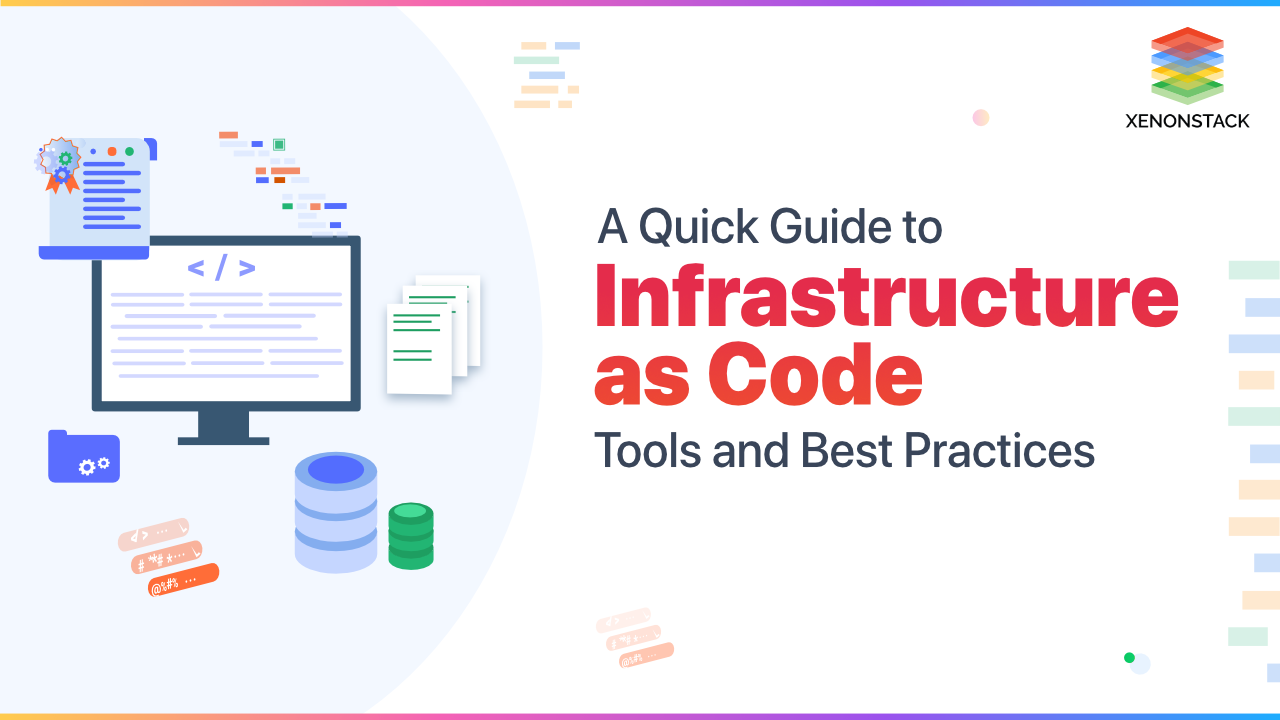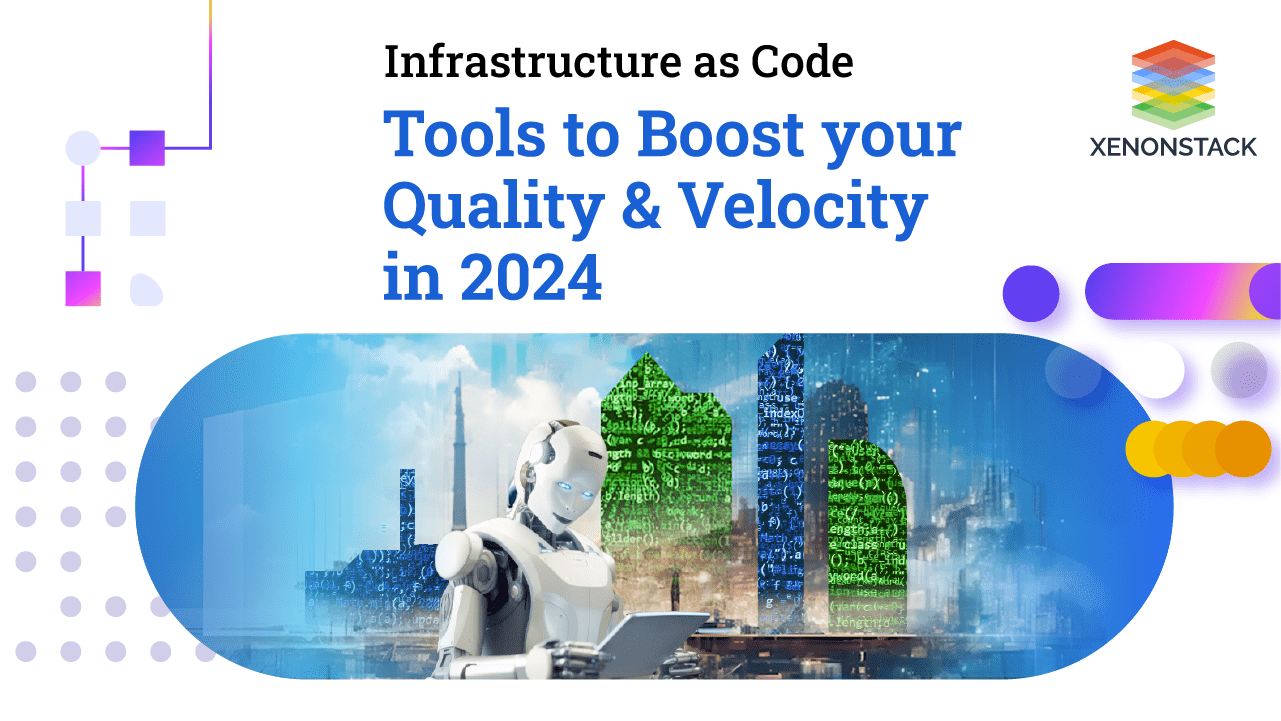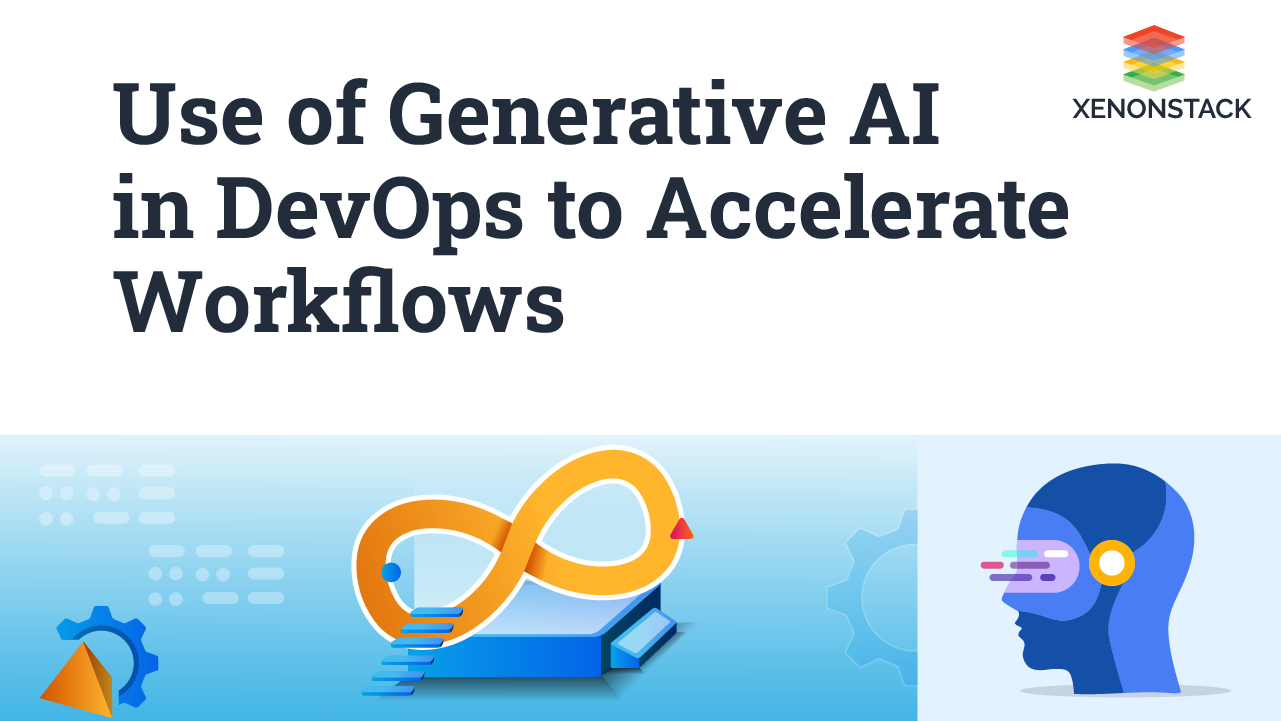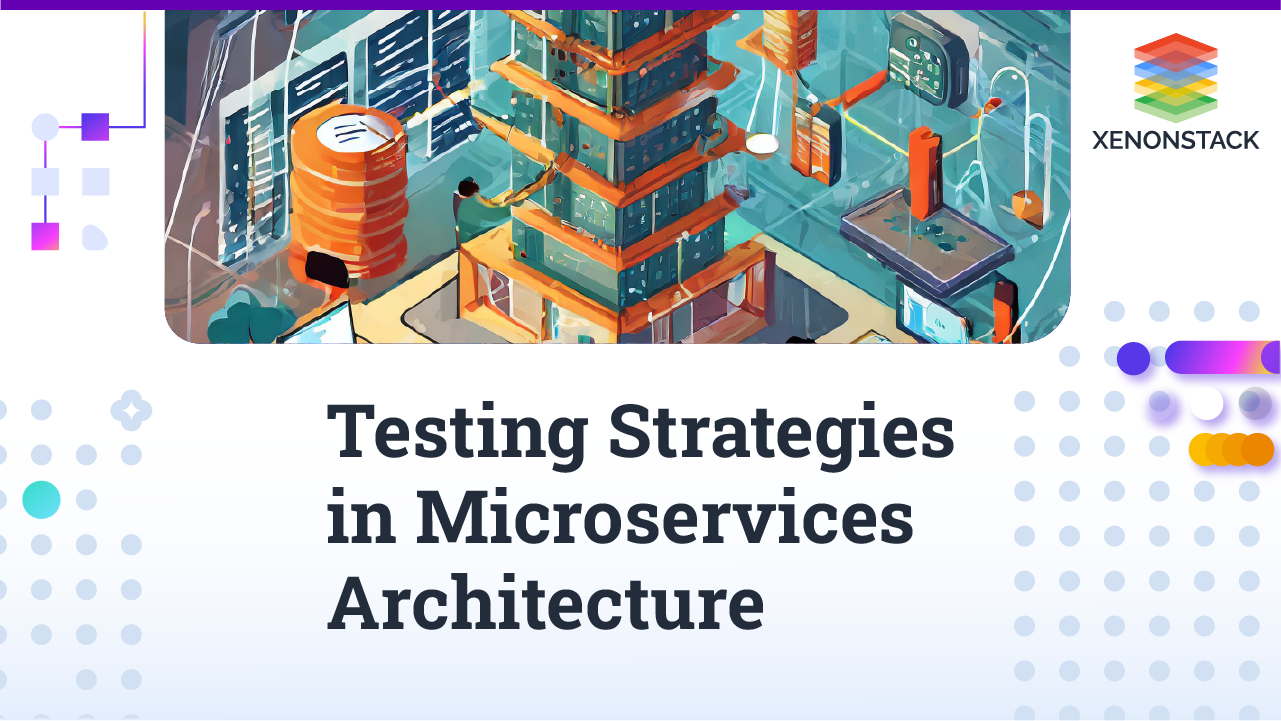
What is Infrastructure as Code?
Infrastructure as Code is a higher-level abstraction to write code/login in a high-level language that utilizes modules to perform tasks on the machine level. Infrastructure as Code involves code to provision, configure, and manage infrastructure. Use the right set of tools to describe the infrastructure on which the application deploys. It includes the specification of Virtual Machines, Storage, Software Stacks, Network Configurations, Security features, User Accounts, Access Control Limits, and so on. The description is done using the code in the declarative language depending on the tools using standard scripting languages to Domain-Specific Languages (DSL) provided by the tools.
A software-centric architecture tightly integrated to compute, networking and storing resources into a single system. Click to explore about, Hyper-Converged Infrastructure Benefits
IAC has the following characteristics -
- Standard syntax.
- Use built-in packages.
- Better Config Management.
- Version controlled.
- Rollback to the previous state if things didn't work.
- Idempotent, i.e., results in the same outcomes when run multiple times.
"If you’re going to do operations reliably, you need to make it reproducible and programmatic."
—Mike Loukides, Vice President of Content Strategy for O'Reilly Media
How Infrastructure as Code (IAC) Works?
The code should be written to describe the new machine's desired state. That code should run on the machine to converge it to the desired state. The code should execute to ensure the machine's desired state over time, always bringing it back to convergence. IAC helps IT operations teams manage and provision IT infrastructure automatically through code without relying on manual processes. IAC is often described as “Programmable Infrastructure.”
DevOps writes down the application code plus configuration management-related instructions to trigger actions from the virtualization and other environments like the database, appliances, testing tools, delivery tools, and more.
In new code delivery, the configuration management set of instructions automatically creates a new virtual test environment, application server, and database instance to exactly mirror the live operational environment structure, both regarding service packs and versioning as well as live data that is transferred to such virtual test environment called Infrastructure as Code part of the process. A set of tools performs necessary compliance tests, error identification, and resolution. The new code is ready for deployment to the live IT environment.
Immutable Infrastructure vs. Mutable Infrastructure
While automating the Infrastructure through IaC and choosing an IaC solution for the same, you first need to decide whether to establish an immutable or mutable infrastructure.
Mutable Infrastructure
Once you have provisioned Infrastructure and later modified or updated according to your needs, this kind of Infrastructure is mutable. Mutable Infrastructure enables the software development teams to make impromptu server customizations and respond to any emergent security issue. But while talking in terms of IaC, mutable Infrastructure undermines one of its key benefits: maintaining configuration consistency within versions and between deployments and environments; as a result, it makes version tracking difficult.
Immutable Infrastructure
Overcome the above hassle by implementing IaC as immutable Infrastructure, i.e., the Infrastructure cannot be modified or updated once provisioned. If the Infrastructure needs to be changed in such scenarios, you don't update the existing Infrastructure. Instead, you replace it with a new one, i.e., you roll out a new version of the Infrastructure. This eliminates the issue of configuration drift and ensures consistency between different environments. Immutable Infrastructure enables teams to easily maintain and track different infrastructure versions and roll out to a previous version if necessary. Immutable Infrastructure is thus more feasible and practical and strengthens all the benefits of IaC implementation.
Infrastructure as Code enables DevOps teams to test applications in production-like environments early in the development cycle. Source: What is IaC?
What are the different approaches to Infrastructure as Code?
After taking the above important decision of choosing what kind of Infrastructure to establish, it is also essential to decide on implementing infrastructure automation while choosing an IaC solution.
Declarative Approach
The declarative approach is the functional approach that is considered the best fit in most organizations. Suppose you want to spin up a virtual machine, then install and configure the required software, resolve the interdependencies of the system and the installed software, and then manage the software versioning too. You just need to specify this desired state of the final Infrastructure you need to set up and provision, and rest of everything is handled and managed by the IaC. This kind of approach is termed the declarative approach. The only downside of this approach is that it requires a skilled, expert administrator specializing in setting up and managing such Infrastructure.
Imperative Approach
The imperative approach is the procedural approach, which requires you to define specific steps through automation scripts to set up and provision the necessary Infrastructure. This approach supports the existing configuration scripts you already have, making it easier for the current human resources to understand the process and adopt IaC. The only concern here is that this could become quite complex, and you might need to manage more work with this approach in scenarios where you need to scale.
Thus, after deciding on the required IaC solution suitable to your needs, you need to:
- Define the configuration parameters for the Infrastructure you want to provision in the Domain-specific language (DSL) in files called manifests
- Send those manifests to a code repository or a master server
- Use the IaC platform to create and configure the desired Infrastructure as per the instructions defined in the manifests
- Many easy-to-use and popular IaC tools help you perform this and automate the setup, provisioning, and management of the desired Infrastructure.
What are the benefits of Implementing Infrastructure as a Code?
IaC has the following benefits -
- Standardization
- Change management/Version control is effortless
- Better use of time
- More efficiency in software development
- Improved reliability
- Improved CI/CD Process
- Increased Speed
- Improved consistency
- Cost-effectiveness
Standardization
- A consistent set of instructions and standardization. Manual configurations are prone to errors—common standard rules & flows which all have to follow.
- Knowledge Sharing is enabled. When infrastructure is documented using the code, it is hopefully relatively straightforward to understand.
Change management/Version control is effortless.
- Version controls the files which define infrastructure.
- All benefits that Change Control offers application development made available for infrastructure management.
- Rollback to the previous state if things go wrong.
- Quick infra provision for dev/test or prod environment.
- Improve customer satisfaction
- Deliver quality service components within a short period, contributing to customer satisfaction.
- Developer Mindset - While managing the infrastructure using the code and involving the application, developers can prompt a change in mindset.
Example -
- How does the application deploy?
- What are the ways to maintain the application?
- How are upgrades done?
- Better Use of Time
While managing Infrastructure with code, offload all of the tedious, repetitive work to computers. As a result, there is a reduction of inconsistencies, mistakes, incomplete work, and other human error forms.
More Efficiency in Software Development
The productivity of developers increases with IaC into the picture, and thus, the software delivery lifecycle gets accelerated and becomes more efficient. With IaC, developers can rapidly get provisioned with their sandbox or CI/CD environments; the QA team can provision production-like stable test environments for thorough testing; the security team can quickly get their staging environment provisioned for user acceptance testing; finally, the entire infrastructure and application source code can be deployed to the production environment at one go.
Improved reliability
The software is responsible for initiating infrastructure changes, so there is less human error.
Improve the CI/CD process
- Continuous Integration (CI) involves merging code changes into a mainline branch multiple times per day.
- Automate Continuous Delivery (CD) comprises regular releases every time code is pushed to the mainline branch.
- With IaC, set up a deployment pipeline that automates moving different versions of the application from one environment to the next.
Increase in Speed
Infrastructure automation through IaC allows you to quickly provision the desired Infrastructure for development, staging, and production environments. With IaC, you can easily and rapidly spin up an entire IT infrastructure by just running an automation script. Traditional infrastructure setup and management was a time-consuming process. However, since IaC documents and codifies everything. Therefore, you can experience an immense increase in configuration and environment provisioning speed.
Improved Consistency
IaC standardizes the process of infrastructure setup. Earlier, ad hoc configuration modifications resulted in configuration drifts between different IT environments, which led to serious deployment issues and security risks while developing application software. IaC prevents those drifts by generating the same target environments with the same configuration every time. IaC enforces consistency, reduces errors and deviations, decreases the chances of infrastructure incompatibility, and ultimately helps the deployed applications run smoothly.
Cost-Effectiveness
With IaC into the picture, the organizations reduce time and effort and make infrastructure management cost-effective. The developers tend to be more productive, spend more time on valuable tasks like innovations, develop new features or solutions, and serve their customers better.
Why Infrastructure as Code Matters?
- Manually set up infrastructure using the visual console provided by Cloud Provider. For example, using the AWS console to launch VMs.
- Use the CLI tool provided by a Cloud Provider. Example: AWS CLI
- Instead of using a Cloud provider, manage your own Physical Machines or Virtual Machines. Write your own collection of configuration tools, management tools, deployment scripts, and so on.
A console is an excellent option for using a Cloud provider to learn the ropes. But this quickly grows tiresome and error-prone if the whole setup is managed like this. There is usually no built-in change visibility. Remember what actions are taken, and document them for the rest of the team.
With IAC, define infra regarding logical steps in a declarative language (e.g., yaml) v& provision infrastructure using that & revert if things go wrong.
How to adopt Infrastructure as Code?
In earlier years, when automation was not that popular in the market, an entire IT infrastructure setting used to be a sensitive and manual process. This process included people setting up the rack and stacks of servers physically. This hardware was then manually configured according to the operating system's settings in use and the application's requirements to be hosted. And finally, the application is deployed onto the hardware. This was the traditional scenario to get the application launched for use.
This entire process was quite critical and time-consuming. Since it required several specialists for the tedious setup and configuration work, it resulted in human resources overhead. Several human resources manually doing different setups led to inconsistency and unwanted configuration variance. Not only this, but there was also a considerable amount of money and labour required for the setup and maintenance of large data centers needed to house all the hardware. Additionally, the high availability and scalability of the hosted applications was also a big problem that significantly impacted the organization's capability to serve and satisfy its customers.
All these problems were somewhat overcome and addressed through the advent of cloud computing. Cloud computing proved to be helpful in solving capital and human resource overhead and the application's high availability and scalability. The configuration inconsistency persisted, where the manual setup of Infrastructure over the cloud could lead to variance and discrepancies.
This is where the Infrastructure as Code came into the picture that basically provisions and manages your servers, networks, storage, and other Infrastructure in the form of source code, rather than using the traditional manual processes or standard operating procedures. This Code then helps you set up and deploy the parts of the Infrastructure quickly and consistently. Here is how to get started with the adoption of IaC
- DevOps should pick a tool that fits best in their environment. E.g., Ansible. Multiple machines configured with Ansible. Cloud has a dynamic infrastructure where software commands are used to create servers (often Virtual Machines), provision them, and tear them down.
- Definition Files used to define Infrastructure. All configurations are defined in executable configuration definition files, such as Shell Scripts, and Ansible playbooks.
- Document the Definition Files code & version all the things. Make small changes rather than batches: the more significant the infrastructure update, the higher it contains an error, the harder it to detect that error if several errors interact. Small updates make it easier to find the mistakes and are easier to revert.
Infrastructure is the process of managing and prevising computer data centers through machine-readable definition. Click to explore about, Infrastructure as Code onAWS
Best Practices of Infrastructure as Code
To implement IaC in the long run, following the best practices is very crucial. Some of the best practices that can be followed are mentioned below
1. Codifying Everything in IaC
All the infrastructure specifications should be explicitly coded in the configuration file like Ansible playbooks, cloud formation template, or any other IaC tool you are using.
These configuration files are the single source of truth of your infrastructure specification & it describe what infrastructure components will be used & and their configuration. It also depicts interrelation with one another. It can be deployed seamlessly & and quickly without any manual intervention needed for infra setup or configuration management.
2. Reduce the Documentation
IaC essentially is the documentation, so we shouldn’t have any extra instructions for the documentation to the IT team. In the past, when any updates in the infrastructure component needed to be done, documentation was required to be up to date to ensure no space for inconsistency. Still, this didn’t always happen. With IaC in place, it represents the documentation and is always up to date, which tends to reduce the work of IT personnel.
Additionally, the flowcharts or diagrammatic representation & and setup instructions are necessary for employees who are not familiar with the IaC deployment process. So it is recommended to keep documentation as minimum as possible.
IaC with containers will make the release cycle faster & efficient and allow developers to devote their time to more productive tasks. Click to explore about our, Infrastructure as Code and Containers
3. Maintain Code in the Version Control System
To manage, track or reconcile the configuration details as they’re written in code. The configuration file should be kept in version control systems, also known as VCS, like git or subversion. Similarly, like any other application code, it is kept in the version control system. to maintain a version of your IaC code.
It also ensures the facility provides an audit trail for the code changes, but it also gives the opportunity to collaborate on peer review or even test the codebase before it goes live. Git branching and the merging feature should enhance the collaboration, and updates of the IaC codebase can be managed properly.
4. Test Integrates & Deploys with CI/CD
Continuous integration (CI) and testing & deployment is the best way to manage all the changes in IaC code. Rigorous testing of infrastructure configuration plays a crucial role in the removal of post-deployment issues. As per the need, various tests like unit, integration, or regression tests. These tests can be performed in an automated way every time there is a modification in the code.
The security of the configuration must be tested & monitored continuously. DevSecOps is an emerging practice for the detection of threats and ensuring security. All this is done with security personnel working with developers, securing the software development lifecycle throughout. Increment in collaboration of security testing and development team treats can be identified earlier to minimize treats live environment. With CI in place, the templated infrastructure configuration can be implemented in multiple environments, such as the dev, UAT, QA, or Production environment, with minimal changes applied effectively.
5. Modularization of Infrastructure
The emergence of Microservices architecture is done in smaller modules that increase reusability and can be deployed independently of the rest of the product components. The same concept can be implemented in IaC. All the infrastructure components can be broken down into separate modules & further deployed in combination as a complete end-to-end infrastructure in an automated fashion.
It tends to provide greater control over the infrastructure component & allows to decide who has control over which infrastructure component. For example, a junior engineer has knowledge of specific components. Modularization allows access to a specific component only to the junior engineer to ensure that not everyone has access to everything, leading to mishappenings.
Modularization naturally limits the number of changes made in the configuration. Also, smaller changes tend to bug detection easily & lead to the team being more agile.
With the usage of microservice architecture, a configuration template can be created for insurance of infrastructure consistency, and the future can be connected with a messaging interface or HTTP.
Infrastructure as Code Implementation Tools and Major Native IaC providers
Infrastructure as code Tools
All tools can be divided into two categories:- Configuration Management Tools: Configuration management tools are designed to install and manage software.
- Configuration Orchestration Tools: Configuration orchestration tools are used to provision servers themselves.
Ansible
- Ansible is an open-source tool for DevOps used for provisioning and configuring management. Uses SSH protocol to communicate with servers.
- It uses the concept of playbooks. Playbooks are written in .yaml.
- Ansible provides a variety of modules. Modules are the heart of Ansible, enabling it to perform Infrastructure operations.
- Ansible is agentless and uses ssh to push changes to servers.
Terraform
- Created by Hashicorps.
- Terraform allows you to describe the end state of the Infrastructure.
- You describe a DSL configuration called Hashicorp Configuration Language(HCL), JSON compatible.
- Terraform is a popular tool used by the DevOps team to automate infrastructure tasks. This describes how our Infrastructure should look like. Single workflow can manage multiple clouds.
- Allow you to write a terraform plugin that can add new functionality.
AWS CloudFormation
- Configuration orchestration tools are allowing you to automate infrastructure deployment.
- Since AWS Cloud Formation is the most popular cloud platform, it provides an automated way to manage an individual's Infrastructure with the CloudFormation tool's help. CloudFormation is a tool by AWS to manage AWS resources effortlessly. Just define resources in a single file, and AWS will create Infrastructure as described in a configuration file with a single click of a button.
- The configuration file is known as a template, and templates can be written in YAML or JSON format.
- Provides you with a roll-back strategy if any error occurs in the new deployment.
- You can deploy a single template file on multiple user accounts and different regions.
Chef
- The Chef is a popular IAC tool among CI/CD developers.
- The plus point is that it supports Ruby-based DSL language.
- It uses cookbooks and recipes to create configuration files. Single cookbooks perform a single task, but they can deliver configuration to multiple servers.
Puppet
- Puppet is another popular IaC tool to manage configuration.
- It uses DSL to define the desired end state of Infrastructure, and puppet will automatically create Infrastructure as you described and make changes to the incorrect statements.
- It uses a declarative approach to describe your Infrastructure's desired state and is the main difference between puppet and chef.
Access the list of Infrastructure as Code Tools to Boost Your Productivity in 2022 Click to explore
Major Native IaC Providers
The top native IaC providers include Amazon Web Services(AWS), Microsoft Azure, and Google Cloud Platform(GCP). They are considered native providers of IaC because their offerings work best within their own cloud platforms.
IaC on AWS
Managing the entire AWS infrastructure using Infrastructure as Code through AWS CloudFormation brings automation to the manual provisioning process and enables the developers and administrators to instantiate the required Infrastructure through configuration files.
IaC on Microsoft Azure
Microsoft Azure enables its customers to easily manage the Azure resources by implementing and taking advantage of Infrastructure as Code through Azure Resource Manager (ARM). With ARM Templates, you can define the desired state of your Infrastructure and achieve consistent results through the principle of idempotency.
IaC on Google Cloud Platform
GCP provides Google Cloud Deployment Manager as its native infrastructure deployment service to automate the creation, configuration, and management of Google Cloud resources. The configurations for the desired Infrastructure can be treated as Code. The creation of resources defined through those configurations can easily be repeated repeatedly by maintaining consistency.
A Holistic Approach
Infrastructure as Code helps IT operations teams to maintain and provision IT infrastructure with automated code deployments. To Understand more about code management, we advise talking to our expert.
- Learn more about What Is Policy As Code And Why Do You Need It?
- Read the complete blog on Compliance As Code
- Access the Quick Guide To Infrastructure As Code Security




